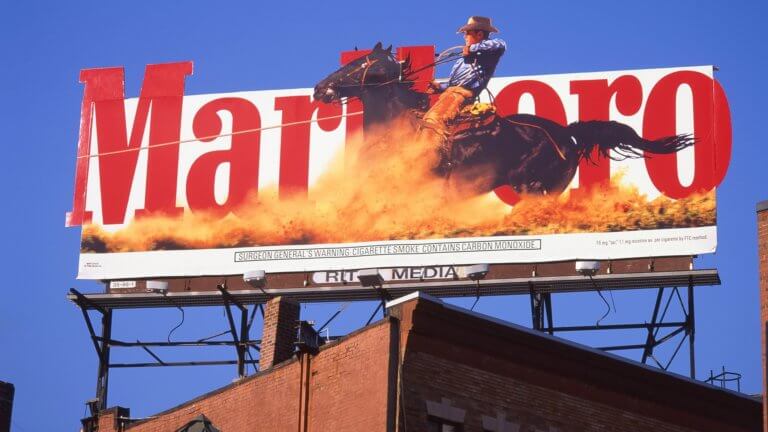
Although there are strict measures and regulations imposed on tobacco brands, they still advertise their products legally. These brands are able to maneuver and bypass the rules creatively. They can get consumers engaged with their ads through tremendous spending, not only on advertising, but also on sponsorships, events, promotions, premiums, and other marketing strategies. Tobacco guidelines are fairly strict and are not to be taken lightly; the industry in Canada is governed federally by the Department of Justice and administered by the Minister of Health.
Tobacco law is regulated by federal governments however, provinces and municipalities may enact their own bylaws. Where there is a conflict between a provision of the Federal Act and a provision of a provincial bylaw that regulates, restricts, or prohibits smoking, the more restrictive the provision prevails. In most cases, provincial statutes do not address general media advertising but instead,details from the corresponding act. Tobacco advertisers must avoid using “lifestyle” advertising featuring glamour, recreation, excitement, vitality, risk or daring, or other associations that might appeal to young persons. They can only advertise in places where young people (defined as those under the age of 18) aren’t permitted by law, such as bars or taverns and they are prohibited to sponsor youth-oriented activities or events.
The global tobacco market size was valued at USD 932.11 billion in 2020 and is expected to expand at a compound annual growth rate (CAGR) of 1.8% from 2021 to 2028. The number of smokers has been rising on a steady level globally. Therefore, companies took it as a chance to develop new products and a wide range of flavored tobacco. Millennials and Generation Z have ever-changing and increasing demands. Therefore, companies have been searching for a creative way to cope with people’s changing habits. For example, Philip Morris International (PMI) – the leading tobacco manufacturer – launched an alternative to cigarettes, which is the IQOS; an electronic device that heats paper-wrapped sticks filled with tobacco that then generates nicotine-containing aerosol. The product has been launched as an alternative to cigarettes. They are now authorized to sell the iQOS device, Marlboro Heatsticks, Marlboro Smooth Menthol Heatsticks, and Marlboro Fresh Menthol Heatsticks.
Cigarettes are one of the most heavily advertised and promoted products in the United States. Tobacco companies spend billions of dollars each year to market their products. In 2018, cigarette and smokeless tobacco companies spent $9.06 billion on advertising and promotional expenses in the United States alone. The four major U.S. cigarette companies spent $8.4 billion on cigarette advertising and promotion in 2018. The five U.S. smokeless tobacco manufacturers spent $658.5 million on smokeless tobacco advertisements and promotion in 2018.
Experiential Marketing Wins
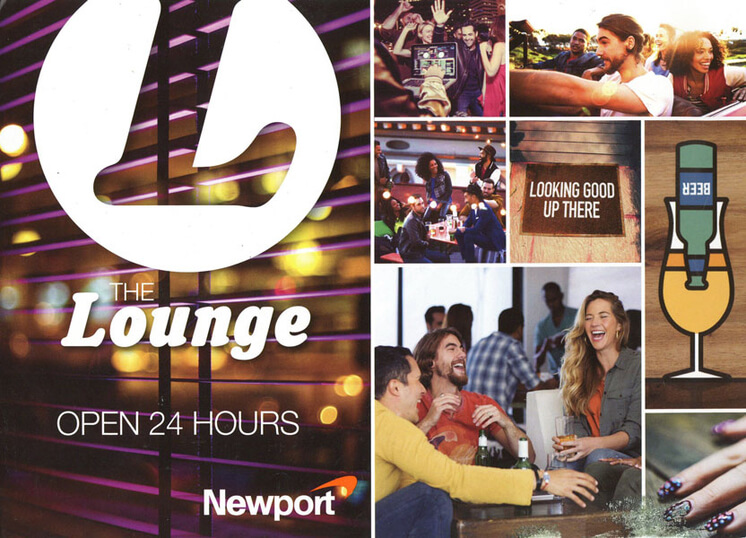
Tobacco companies use experiential marketing as a tactic to reach and engage with consumers and keep existing consumers loyal. In 2016, around $122 million was invested in cigarette and smokeless tobacco experiential marketing. For instance, Marlboro hosted ”SXSW”, a Marlboro Lounge for adults at the popular technology and music festival, South by Southwest in 2011.
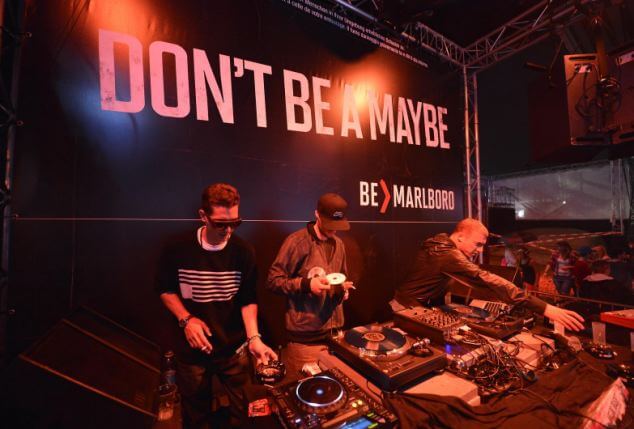
The ‘Don’t be a Maybe’ campaign has been seen in advertisements, billboards, and promotional events around the world in countries like Indonesia, Brazil, and the Philippines, where the regulations on cigarette advertising are not as strict as in some European nations.
Increase Visibility Through OOH
Out-Of-Home (OOH) advertising is a great medium to showcase tobacco products. Billboards have provided the tobacco industry with a relatively low-cost method for cigarette advertising and are used to reach a broad targeted population.
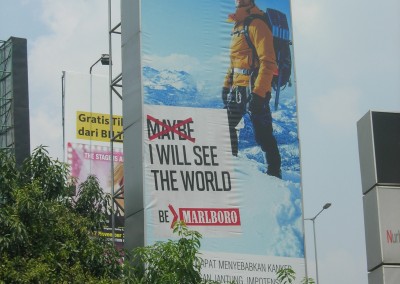
In 2011, PMI launched a new mass media campaign in Germany to promote their refurbished Marlboro brand. PMI stated, “Innovation is not only about launching new products. Importantly, it is also about thinking differently and innovating in the way we market our brands to adult smokers and trade partners. ‘Marlboro Country’ and the synonymous Marlboro cowboy were replaced with a different approach. The new campaign was targeted at 18-24-year-olds and centered around principles of inspiration and decisiveness, where the young are told ‘Don’t be a Maybe. Be Marlboro”.

According to PMI’s de Wilde, “Once the campaign concept was established, we started introducing image visuals to add emotional elements with the anchor, “Be Marlboro” in real situations”. De Wilde explained the concept of the youth-focused campaign by stating that “young adults feel overwhelmed by the flood of information and options that new technologies offer. In this time of uncertainty, they have very few life compasses that can provide them with guidance. With the new campaign, Marlboro encourages them to be decisive, trust themselves, and follow their inspiration. The concept is very simple: there are three ways to react when faced with a decision: Yes, No, or Maybe. Marlboro does not believe in Maybes”.
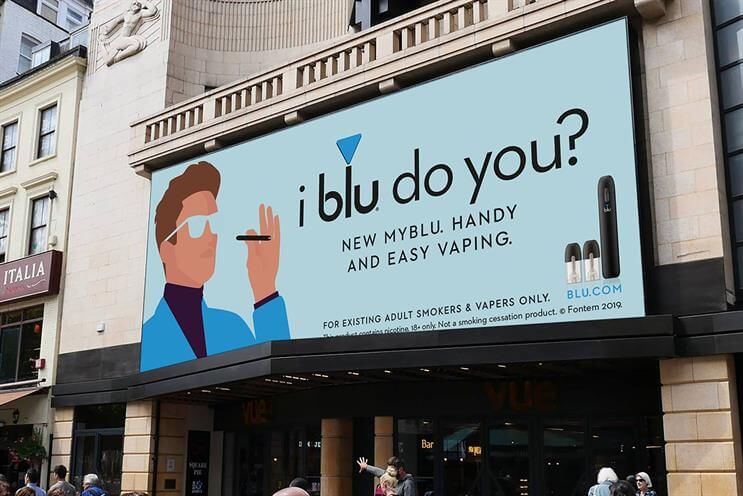
In 2019, the vaping brand Blu – also known as Myblu – launched a new campaign to encourage smokers to switch to e-cigarettes. The device is a closed vaping system using refillable ‘pods’, which are available in a wide range of flavors including: Cherry Crush, Strawberry Mint, Green Apple, Menthol, and Tobacco Creme. This marketing campaign was successful in raising consumer awareness of vaping. The campaign consisted of a series of advertisements including OOH ads that ran across more than 3000 sites in Ireland and the UK.
Pete Blackman, brand planning manager at blu UK, said, “Vaping culture has grown rapidly in the UK, with many vapers considering themselves to almost be in-the-know on something new and different, and as a result, part of a special club. As the weather warms up, more people are out and about socializing. Smoking often plays a part in these summer occasions and we want to take over those social moments and put Blu in front of mind. With a heavy presence of outdoor advertising and brand activations taking place across cities nationwide, our aim is to get the nation to stand up, take notice, and take action by switching to something better with blu”.
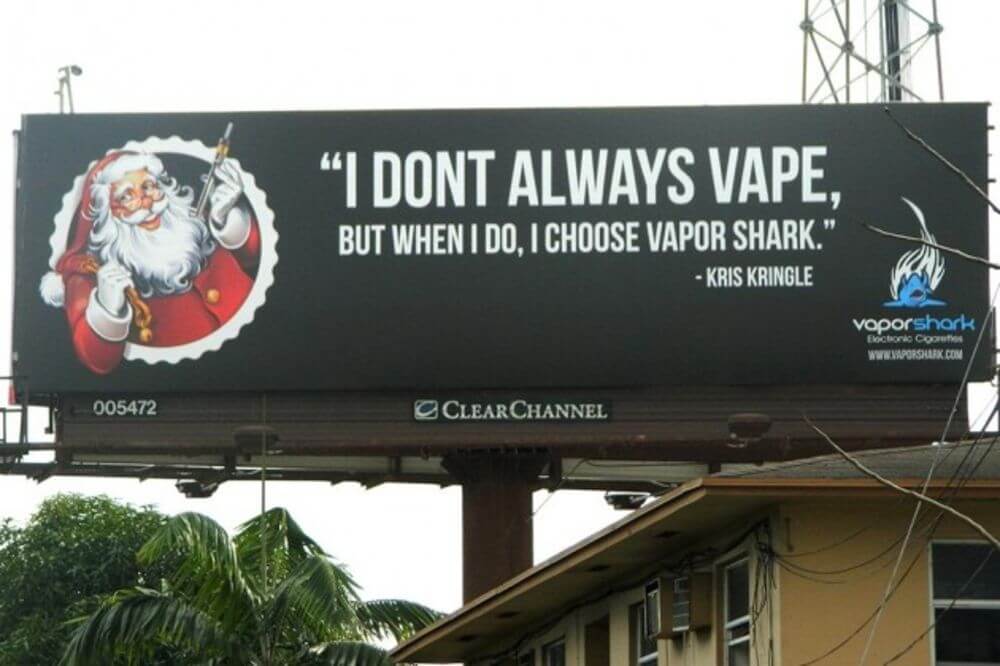
Not all tobacco ads receive praise. Vapor Shark erected a billboard in Florida that featured Santa Claus smoking an e-cigarette with the words, “I don’t always vape, but when I do, I choose Vapor Shark”. The billboard was harshly criticized by e-cigarette opponents who believe that Santa Claus is child-friendly and the electronic version of tobacco sticks still provides a “gateway” to smoking for young people. Opponents were worried that this ad would attract young children who are vulnerable to trying e-cigarettes because of the belief that flavored cigarettes are less harmful than unflavored cigarettes.
To Wrap Up
Each year, tobacco companies face great challenges with the increased compliance and enforcement activities around the sale and promotion of cigarettes and vaping products. However, they spend billions of dollars to promote their products, especially electronic cigarettes that are especially popular with young people. Their efforts can’t be denied as it can be easily seen in the continuous development of their offerings, whether that’s enhancing the devices, or coming up with new appealing flavors. They have different ways to reach their target market through sponsorships, music festivals and events, promotions, TV ads, and much more attention on billboards and transit ads.


